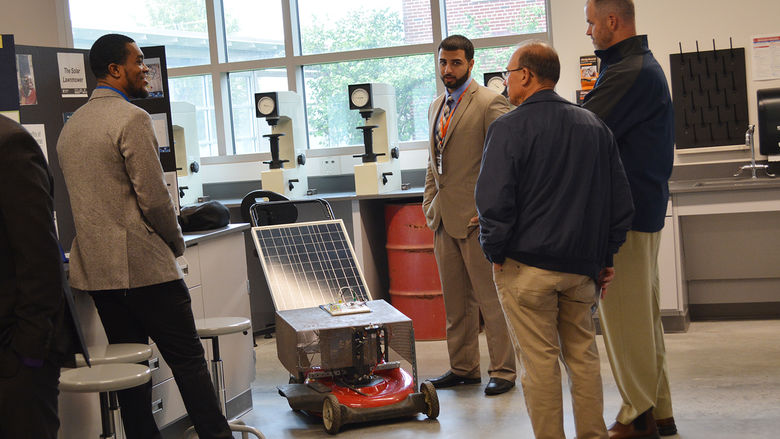A student intern at Penn State Harrisburg has played a key role in developing a better way for fellow students to learn about the courses they need to get their degree.
Penn State students and advisors rely on Recommended Academic Plans – RAPs – as the semester by semester roadmap for what courses students need to take and when for their particular degree. Each college or campus within Penn State maintains the RAPs for its own majors or degrees. Today, more than 1,200 RAPs reside on the University website.
But RAPs are presently in the form of pdfs – a static text document that you access on your computer.
“With the emphasis on making the web accessible, especially for people with visual impairments, we realized that these pdfs should be structured in the right way to be used by a text to speech browser,” said Christopher Weaver, Penn State Harrisburg web manager.
That has become a priority for Penn State’s Division of Undergraduate Studies (DUS) which has required that all RAPs throughout the University be converted from pdfs into a web-based format by October 2014.
To make that happen, the DUS looked to the web team at Penn State Harrisburg.
Weaver said the college’s web team had previously developed customized software that could be shared and used by other campuses throughout the University.
The DUS came up with a template as a prototype for the new web-based RAPs, then tapped Penn State
Harrisburg, Penn State New Kensington, and the College of Earth and Mineral Sciences at University Park as the first to convert their RAPS into the web format and to pilot the new web-based RAPs for the rest of the University.
Weaver turned over the nuts and bolts of converting Penn State Harrisburg’s 53 RAPs to Michelle Lynne Pellechia, an information sciences and technology major who also minored in business administration.
Pellechia began converting the RAPs in November 2012 while working as a student intern. She devoted up to 15 hours a week toward the project. At the same time Pellechia maintained a 12-credit class load and completed her senior graduation project – developing a website for a real client, a wedding/event planning business based in the Lehigh Valley.
Pellechia also played volleyball on the Penn State Harrisburg team, was president of the campus Information Technology Club, and was a public relations “captain” of the Penn State IFC/Panhellenic Dance Marathon, known as THON.
Weaver said Pellechia converted all the Penn State Harrisburg RAPs into the digital format well ahead of the timetable, allowing others to use the RAPs completed by Pellechia as a model for converting their own RAPs.
He said the web-based RAPs will benefit all Penn State students, not just those who are visually impaired. Students and advisors will be able to instantly link from the RAP to the University Bulletin entry for courses they are required to take.
The web-based RAPs will be easier for students to view and manipulate on their smartphone and other mobile devices.
The new RAPs will also be better for the environment, because students shouldn’t need to print out documents as often as they do now using the pdf
format, Weaver added.
Pellechia, who graduated in May, now has a full-time position with PPL Corporation, where she interned in summer 2012. Her career goal is to
become an analyst who can “bridge the gap between technology people and business people,” Pellechia said.




